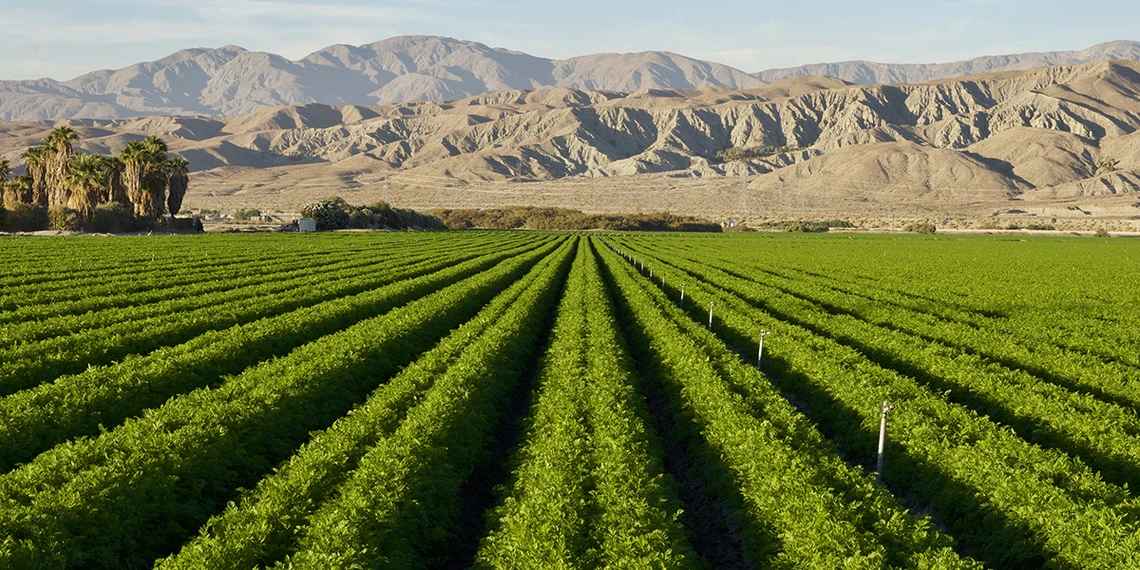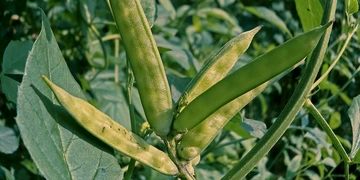The Promise and Potential of Southwestern Biofuel Crops
Can biofuel feedstocks improve farm profitability in the Southwest? Scientists at the UA’s Sustainable Bioeconomy for Arid Regions Center of Excellence are working to optimize regional production of desert-adapted plants that industrial markets value.

The Sonoran Desert’s typically high-alkaline soil, minimal rainfall and extreme temperatures (which can dip below freezing in winter and routinely reach 110 degrees in summer) make it a challenging agricultural environment. Scientists, however, have identified the region as a prime area for growing feedstock crops valued by the biofuels markets, while simultaneously creating jobs in the area.
The Sustainable Bioeconomy for Arid Regions (SBAR) Center of Excellence at the University of Arizona has mobilized a team of engineers, chemists, soil scientists, plant scientists, educators and extension professionals who are collaborating to optimize regional production of two desert-adapted plants — guayule and guar — primarily used to create rubber and guar gum, respectively. At the same time, they are working to identify and develop new co-products, ranging from useful chemicals to biofuels.

The gum made from desert-dwelling guar (above) is an essential ingredient in many common household items, but scientists believe its future could be in biofuel.
Guayule and Guar: The Basics
The primary reason SBAR is concentrating its efforts on guayule and guar comes from industrial markets. Guayule (“gua-you-lee”) is used to make rubber, needed in products from tires to wetsuits. Guar (“gwär”)creates guar gum, integral to the production of such disparate products as paper and ice cream. From the start, economic viability has played a vital role in the project. Distinguished Professor Dennis Ray, who spearheads much of the work being done at UA’s School of Plant Sciences, explains: “These products have to be wanted by industry, not pushed by overenthusiastic researchers. Industries want us to be economically viable.” He cites industry supporters Bridgestone and Guar Resources as fundamental to the project’s success.
The gum made from desert-dwelling guar (above) is an essential ingredient in many common household items, but scientists believe its future could be in biofuel.
Additionally, both guayule and guar are drought-resistant and have been successfully grown and tested in the Southwest, says Ray. “We are looking for additional uses and compounds, which will enable us to increase the economic viability of these two.” To both laypeople and specialists, the most tantalizing potential byproduct may be biofuels, which could one day decrease the nation’s dependence on fossil fuels.
SBAR’s Four-Pronged Approach
Ray explains that the SBAR Center of Excellence team has four objectives. First is helping regional farmers grow more crops more efficiently by using traditional methods such as genetics and breeding while simultaneously looking at soil salinity, irrigation and soil quality. “Soil health has been ignored for a long time,” says Ray. “It’s a big part of the best agronomic practices we’re developing.”
Second is post-harvest logistics and co-products. How do such variables as length of storage and time of harvest affect a crop’s quality and economics? The project’s chemists and engineers play a vital role in these evaluations, studying harvest practices to identify potential co-products.
Third, system performance and sustainability. Developing new agricultural businesses will have significant impact on the local population. This research group studies both the social and the economic impact on rural communities and develops models to provide a path to commercialization.
Fourth, says Ray, is education and outreach. “We have groups of grad students and teachers developing modules to teach K through 12 students about agricultural biofuels — it’s something they can understand easily.” In addition, SBAR hosts workshops on sustainable practices in rural regions and Native Nation lands, and involves students in internships, 4-H projects and STEM camps.
With its multiple layers and objectives, SBAR enlists the talents of a wide spectrum of specialists. Ray says he’s proud of the people involved. “Getting this team together has been a big success. We have people in Arizona, New Mexico, Colorado and California working on this. I never met many of these people before, and there are some amazingly talented folks in this who are terrific to work with.”
The Challenge of Literal Field Work
Because agriculture is a cycle, prior attempts to optimize the growth of guayule and guar ran out of time, says Ray. “This isn’t a new concept, but previously it had been limited to a researcher or an industry with a short period of time. Fortunately, we have lots of information from other projects, so we’re not reinventing the wheel. That’s the good part about science: The information isn’t lost.”
Still, agricultural programs must always contend with unexpected elements. In 2018, the first season that SBAR had plants in the field, the scientists dealt with conditions rarely encountered in the Southwest. “That was a strange year, weather-wise. It’s not often that we get snow damage on our plants. But that’s agriculture — you can’t control the weather.” Ray continues, “It’s a challenge when you can’t get out in the field because of rain, and when winds of 40 mph blow our seeds away. You roll with the punches.”
A Wealth of Future Benefits
Ultimately, the work that the SBAR team is doing has potential beyond guayule and guar. “Once the process and the people are in place, we can drop any industrial crop into the model. It could be a minor crop, or a new oil seed — any plant with a primary product that industry wants.” He emphasizes that the goal is not to put farmers out of business but to help evolve what is farmed. “We’re going into areas where traditional agriculture is leaving because of water issues and salinity.”
Ray says a green guayule landscape is within sight. “I can see fairly wide acreage of guayule in Arizona by at least the end of the grant, and certainly within 10 years. The market for rubber is going up because of the world’s increased demand for cars. We want to help rural populations here, and also help meet that demand.”
